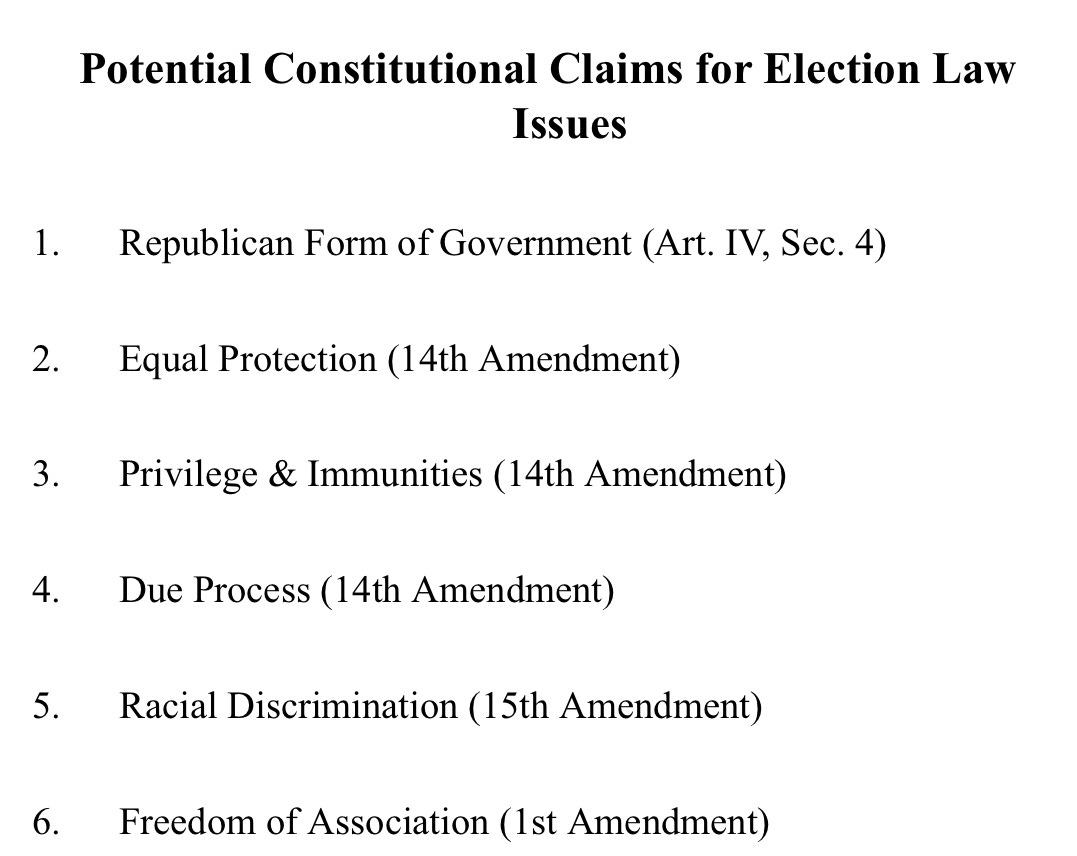Jim Crow: Political Apartheid in America
As the pages I recommended from “An American Dilemma” make clear, the system of white supremacy known as Jim Crow piled a bevy of oppressive and self-reinforcing conditions and devices upon Black voters for generations.
Only when you see how they worked together and reinforced one another can you understand how those Southern states ceased to be functioning democracies for generations:
Almost no participation by Black citizens (80,000 out of 3.6 million Black citizens—2.2%— participating).
Low turnout overall; well below the rest of the nation.
Political incentives to continue to suppress the Black vote (along with poor White voters) and attack basic rights of Black citizens through a wide array of tools and devices.
Lawlessness, including the open defiance of federal court orders and haphazard/discretionary application and enforcement of rules.
Violence and intimidation enforcing it all; lack of law enforcement and criminal justice response to protect Black voters and citizens.
And the twisted irony that those who gained power through this broken system enjoyed long tenure, seniority and outsized power in Washington.
(As I explain in the video above, once you take it all in, the parallels between Jim Crow political conditions and the worsening conditions in today’s undemocratic states (well beyond the South) are disturbing. The similarities should both scare us and spur us to action.)
For the purposes of my class, I provide two charts for this Week:
First is an inventory of the various devices used to suppress democracy and voters in the South:
As Myrdal documents, the oppressive cumulative effect was greater than the sum of the individual devices:
The second chart is the list, from last week, of the various Constitutional provisions that provide potential avenues to challenge these suppression devices and tactics in court:
In upcoming classes, we’ll work our way through both charts to track 1) the fate of each device in the courts; and 2) what provisions in law are used to strike them down.
Let’s get started on that long journey:
First Cracks — Long Delayed
Two of the most egregious practices locking in Jim Crow at the turn of the century were “grandfather clauses” and racially exclusive (ie. White-only) Democratic primaries. Both would lead to decades of XV Amendment litigation—and a lengthy back and forth between the Supreme Court and states that refused to abide by rulings in good faith:
1. “Grandfather Clauses”
As with other states (including Alabama, Georgia, Louisiana, North Carolina and Virginia), Oklahoma’s “Grandfather Clause” was anything but subtle. Shortly after becoming a state in 1907, Oklahoma amended its new Constitution to add a literacy test, but with a twist:
“No person shall be registered as an elector of this state or be allowed to vote in any election held herein, unless he be able to read and write any section of the Constitution of the state of Oklahoma; but no person who, on January 1st, 1866, or any time prior thereto, entitled to vote under any form of government,…and no lineal descendant of such person, shall be denied the right to register and vote because of his inability to so read and write sections of such Constitution.”
In other words: if you or your father or grandfather could vote before Blacks were allowed to vote, you don’t have to take the literacy test. If you or your forebears couldn’t vote before Blacks could vote, you must take the literacy test…
Watch with a 7-day free trial
Subscribe to Pepperspectives to watch this video and get 7 days of free access to the full post archives.






